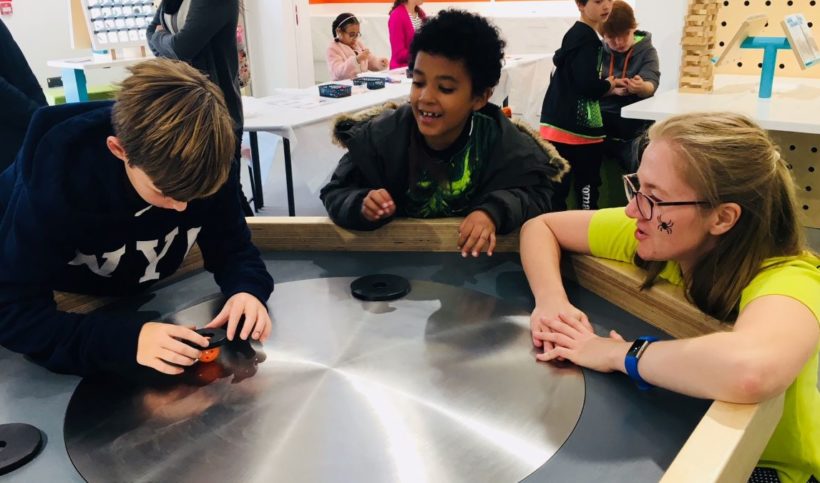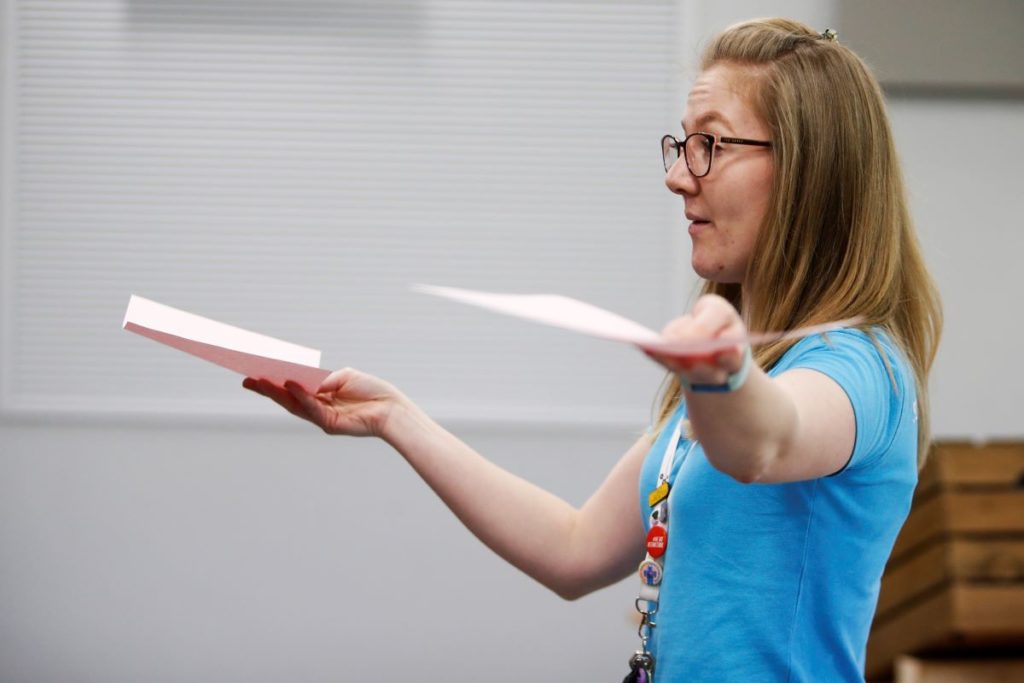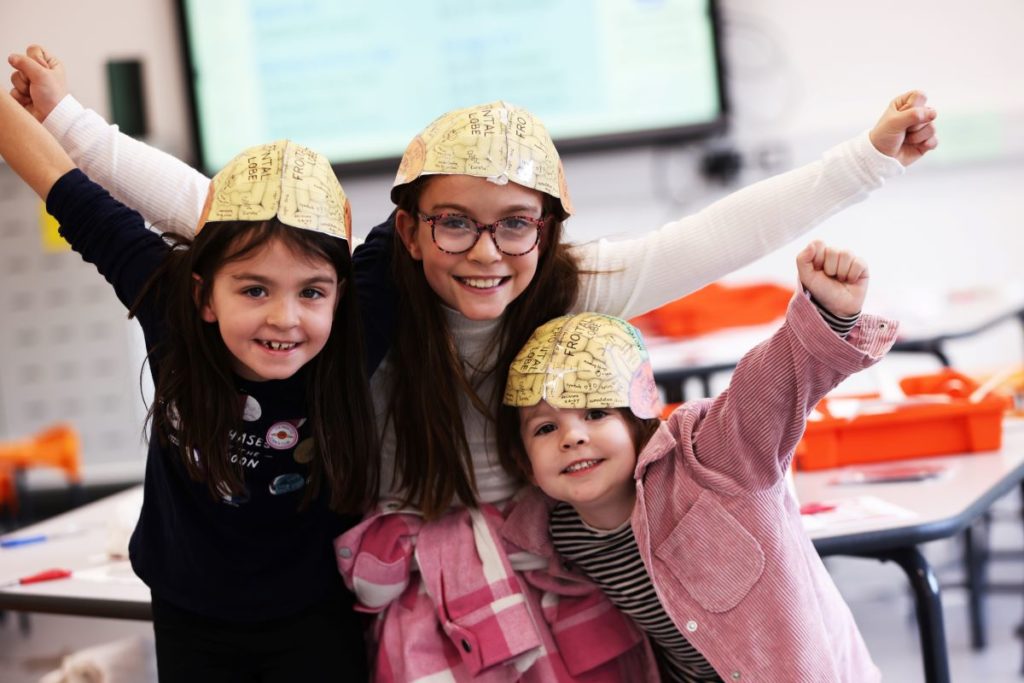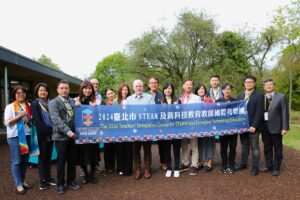Building science capital as an approach to STEM engagement
Friday 10th February 2023

Science Oxford Centre Operations Manager Dr Emily Fisk advocates that science communication and engagement should be approached through the lens of developing ‘science capital’, requiring dynamic and flexible engagement that considers people’s existing relationships with science. This inclusive approach helps more people feel that science is ‘for them’, and can help to address inequity in STEM.
The concept of science capital has developed through the research of University College London’s Professor Louise Archer and team, and forms part of Science Oxford’s evidence-based strategy for STEM engagement and learning.
Sharing STEM engagement practices
In between managing the busy-ness of the centre’s science learning activities, Emily is finding time to share her experiences of integrating science capital in practice with peers and colleagues working in science communication and STEM learning spaces. In doing so, she hopes to support others and broaden impact across the sector.
She says, “There are countless individuals and organisations across the UK who work to engage and inspire people about STEM. Each of us have techniques and ideas that we can share to enhance our collective practice and STEM engagement goals. At Science Oxford, we have discovered simple ideas and tweaks to our practice, which build science capital in our communities and allow us to use science capital as a reflective tool. By sharing these, others could benefit too.”
In January, she shared her experiences and Science Oxford’s approach to STEM engagement with groups of volunteers from University of Oxford Gardens, Museums and Libraries as well as science communicators connected in the BIG STEM Communicators network, a national skills-sharing network of people working in science communication.
What is science capital?
We caught up with Emily after a talk with emerging science communicators at the BIG Little Event, and asked her about what science capital means and why this approach is integral to the work of the Science Oxford Centre.
Emily explains that science capital acknowledges that people have differences in the extent to which they feel connected with science or that science is ‘for them’. This affects how they relate to or engage with science. Science capital is essentially made up of what one knows about science, how one thinks about it, and what science-related activities one does.
Varying personal and familial factors, such as gender, ethnicity and socio-economic status; levels of education and experiences of STEM education systems; and everyday life experiences through which people engage with science, such as popular media or other opportunities for informal science learning, all contribute to different levels of science capital.
As a science communicator or someone working in places of STEM learning, understanding science capital helps cater and tailor experiences for different people. Creating positive, engaging and fulfilling experiences builds science capital so that people will be more likely to engage with science at future opportunities.

Research by the Enterprising Science Project showed that most of the UK population (approximately 68%) have a medium level of science capital, and generally have some interest in sciences but do not necessarily seek to actively engage. Only about 5% of people in the UK have high science capital. They see science as ‘for them’, actively engage with science, and appreciate the value of science in their lives and in society. Far more people fall on the opposite end of the spectrum, with approximately 27% of people in the UK having low science capital. They feel science is not ‘for them’ and don’t see the relevance of science in their lives. Through the impact of social inequalities, those with a high science capital are more likely to be male and socially advantaged, while those with low science capital are more likely to have a lower income and be female.
Why build science capital?
Improving science capital in previously underserved communities benefits STEM and society, building a fairer and more inclusive STEM-literate society. This can improve the diversity of people who contribute to and participate in science and innovation, helping bring together different perspectives when solving societal challenges with STEM.
As a place of science learning and engagement, the Science Oxford Centre aims to be a place where different people feel comfortable and welcome in a science setting. Working with community partners, we have been able to gain insight into different communities and tailor better experiences for them, raising their science capital, and improving their confidence in engaging with science. We are grateful to the support from funders, such as the Association of Science and Discovery Centres, Science and Technology Facilities Council, Science Museum Group, Edina Trust, Education Endowment Foundation, and Primary Science Teaching Trust, which allows us to engage with previously underserved communities in our region in an inclusive and rewarding way.
Practical tips to build science capital
Emily’s advice for other science communicators is to consider all the ways they can play a role in impacting science capital. This includes showing people how science connects to them in their own lives and increasing opportunities for them to talk about experiences with science in their lives. She encourages science communicators to value and build on people’s existing knowledge and connections with science, help them recognise STEM skills they have but may not be aware of, and give them confidence and ownership of their experiences. This involves active listening, using appropriate language and visual signals, and ensuring examples reflect diverse experiences and interests. She advises increasing opportunities to broaden the perception of who does and uses STEM in work and to connect with diverse people working in STEM.
These tips all relate to the Science Museum Group Engagement Reflection Points. Emily recommends their helpful booklet for science communicators, which condenses science capital literature and approaches, and supports science communicators through all stages of activities, including planning, delivery and evaluation.
On 11 February, communities around the world celebrate the International Day of Women and Girls in Science, which focuses on promoting equal access to and participation in science for women and girls. At Science Oxford, we also take this opportunity to reflect on how we impact how girls, who are frequently shown to have lower science capital than their male peers, participate in science. We are committed that the centre should be a place where all people of the region can discover and connect with science.

Read more about one of our previous projects, part of the UK Association of Science and Discovery Centres and the Science Museum Group’s Science Capital Programme, aiming to increase diversity and inclusion in science informed by the latest science capital research.


